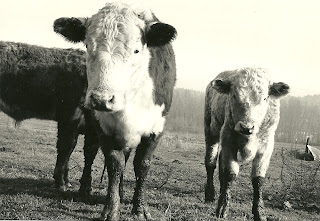Well, I've been getting a lot of information on Snowflake. In an effort to be realistic especially since it's my habit of glossing over the bad stuff when I desperately want something to work, here is my current list of pros and cons to keep me in check. I'll update this from time to time as new information presents itself.
Pros
MCS neighbors won't be trying to poison me daily
MCS community and support system
Inexpensive land/acreage
Higher elevation
Drier climate, only 17 inches of precipitation per year (less mold)
Seasonal change
Quiet
No EMFs or towers
Cons
Coal mining power plants affecting the air quality
Pig farms affecting the air quality
Control burning affecting the air quality
Out of control burning (fires) affecting the air quality
Free-roaming cattle
Free-roaming packs of feral dogs (oh great!)
Lack of rentals
Lack of contractors (some say this isn't true)
Expensive construction and utility hook-ups
Windy
Dusty
Desert (brown, brown and brown)
Drier climate (more wrinkles)
Lacking in quality food source
Poisonous centipedes, spiders, snakes, fire ants, horseflies
Wild rabbits invasive like rats with fleas and diseases
Car-eating rats
Some of the MCSers are people you want to avoid
Non-MCS people are not fond of the MCS community
Construction and building code restrictions
HOTNESS in summer months
Water quality issues: toxic levels of iron and manganese requiring filtration and treatment systems
The problem with a pros and cons list is each individual aspect has a weight. For instance, the having "MCS neighbors won't be poisoning me" , "quiet", and "inexpensive land/acreage" are HEAVY. But so are all those air or water quality problems. Currently from what can surmise from the news and some online posts is there is a raging forest fire in the middle of Arizona. On some MCS online lists people are expressing their need to leave Snowflake immediately. They don't state whether it's because of the smoke. I've been told these fires are common and if they aren't in Arizona, they are in Colorado and the winds blow the smoke right where I wouldn't want it to be. I'm not real excited about coal mining power plants or pig farms either. Also, it doesn't seem to be that easy to move there. No place to rent and difficult to build.
As an example of how unrealistic I can be, I was planning to visit in August and camp in my van. Really? The last time I was in Arizona it got up to 123 degrees and I think I'm going to sleep in a metal can with the sun glaring down on me and not bake myself brain dead? At a higher elevation, I think Snowflake is a little cooler, but not having ever visited, I don't know this for sure.
While I was out blackberry picking a couple days ago wandering in the wilderness I kept thinking, "at least there aren't any poisonous snakes out here hiding in the bushes."
Not sure about Snowflake. More research is needed.
What about Maine? At least they have real snowflakes. I recently read it is one of the cleanest, healthiest states and the state with the least about of chemical pollution...hmmm....I need more information.
Anyone know about Maine?





.JPG)
.JPG)
.JPG)
.JPG)






.JPG)
.JPG)

.JPG)
.JPG)
.JPG)
.JPG)


.JPG)
.JPG)
.JPG)
.JPG)


.JPG)
.JPG)
.JPG)
.JPG)
.JPG)
